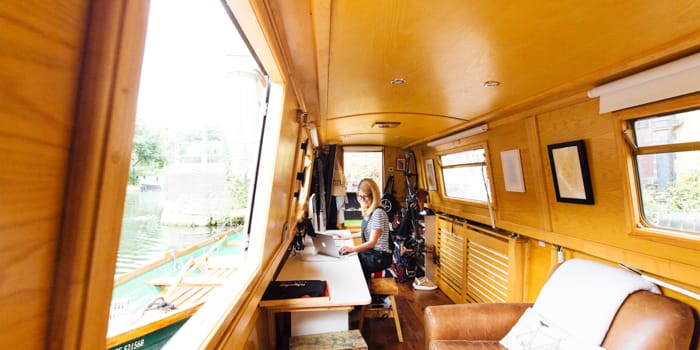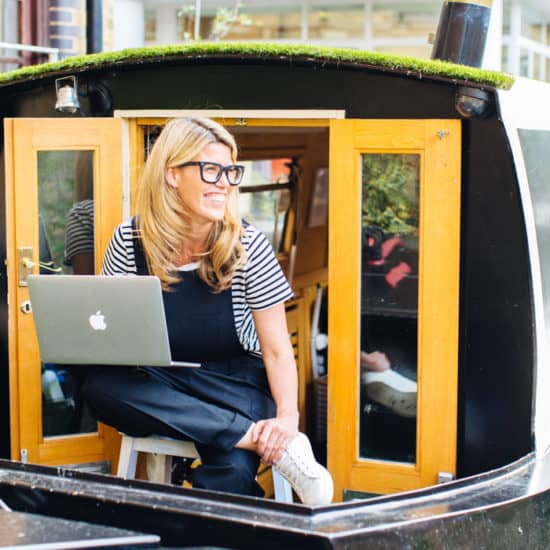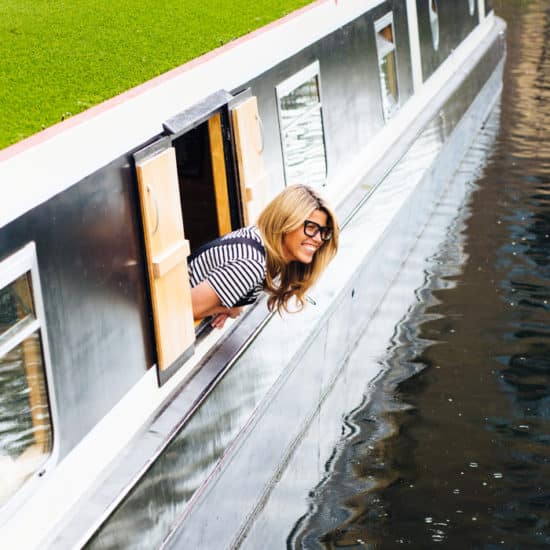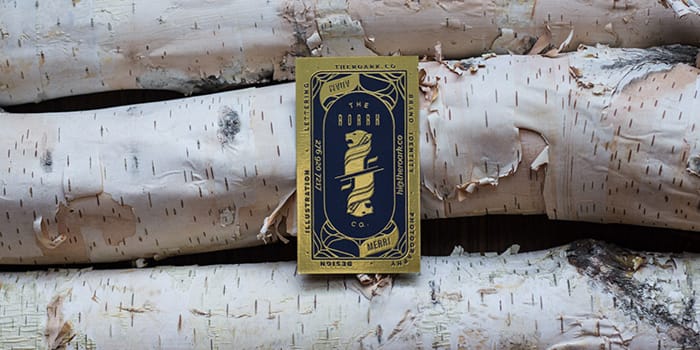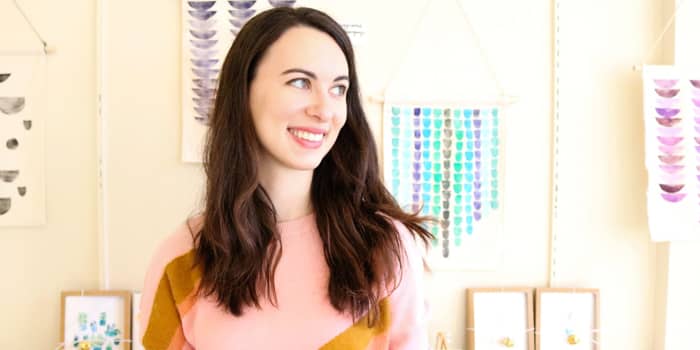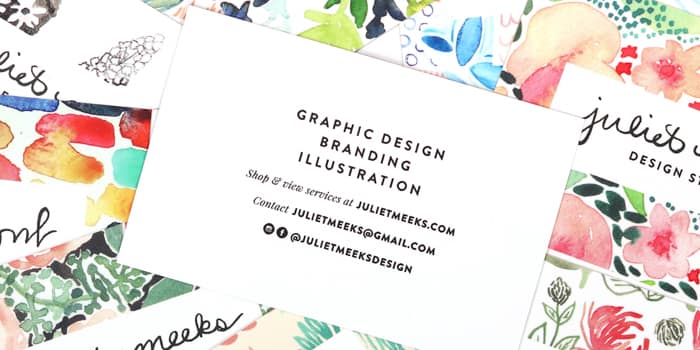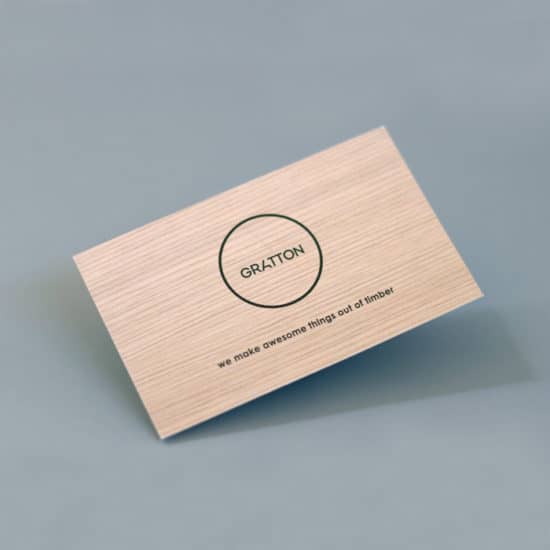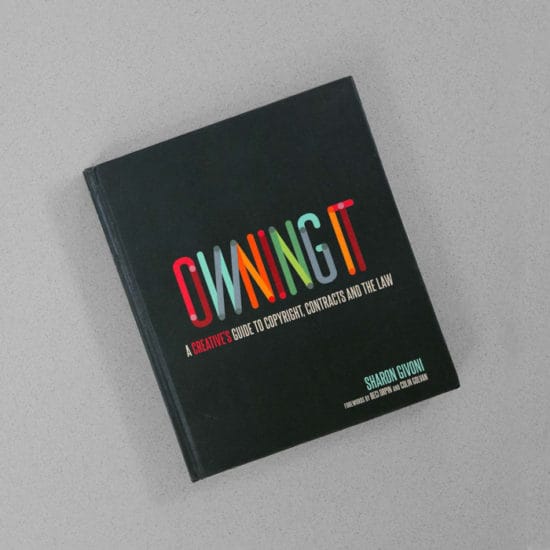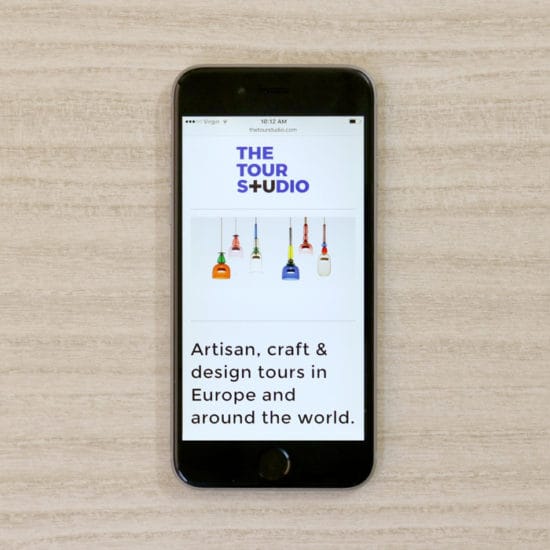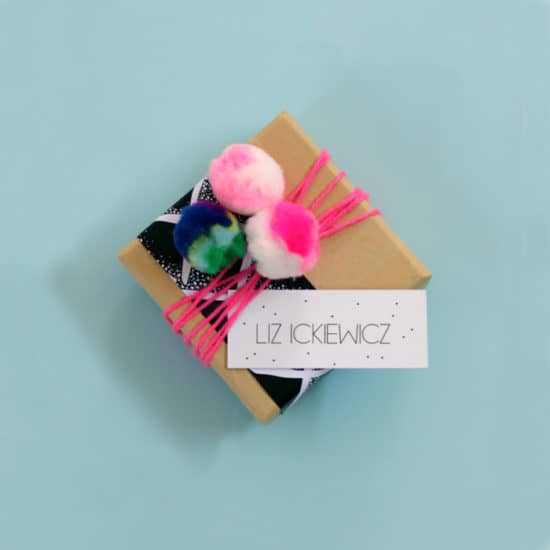How to supercharge your corporate business cards
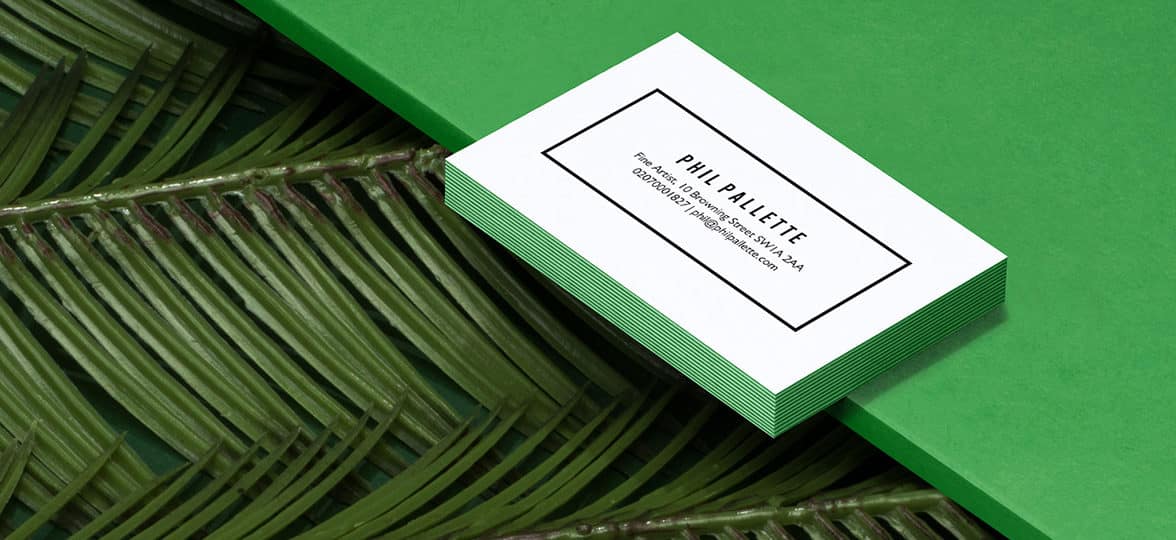
Sure, your handshake might be how you make a first impression, but your corporate business card is the physical representation of your brand—and it’s one that people take away with them. That’s why it’s important to invest in well-made print materials. You don’t want to be remembered as the person from the company with flimsy cards, do you? Of course not.
Your card is your brand
The look and feel of your corporate business cards illustrates what kind of brand you are. Think about what card features communicate your brand values. Will rounded corners communicate sophistication? Are you an eco-friendly brand in need of some recycled-paper business cards? Or maybe premium-quality, extra-thick paper will show that your brand only invests in the best? These design decisions will not only help fine-tune your brand’s identity, but will help you look, feel, and be your best.
Customizable corporate cards
MOO corporate business cards are easily customizable for each of your employees. There may be many elements and departments in your business, which is why a customizable design template makes it easy to design and differentiate themselves within the business. For example, each department can be represented by a different color or image on the back, while the rest of the design stays the same. For a subtle flash of color to differentiate teams, our Luxe cards can be printed in a rainbow of color inseams.
Easy employee self-ordering
If you run a larger business, you can save a lot of time and effort by setting up a system for employees to personalize and order their own cards. With MOO Business Services, that’s easy to do. We offer a designated online platform for companies to upload their own design templates, with lockable elements to help keep a handle on brand identity. That way, employees simply log in, punch in their details, and place their order. (Or re-order, if they’re a networking superstar.)
MOO Business Services also gives your company a dedicated account manager. This business card champion can help with 24-hour turnaround, quick and easy edits to your design templates, and global delivery. In other words, they’re the perfect assistant for helping your brand look its best.
So what are you waiting for? It’s time to give your brand the edge over the rest—amazing corporate business cards. Click here to find out more about MOO Business Services.
Creatives tend have a blend of skills – that’s why networking by shared projects rather than single skills suits today’s diversity of talent. It’s on this principle that Pip Jamieson founded The Dots.
Pip Jamieson is the epitome of entrepreneurial high-energy – and we are in awe. The founder and CEO of creative networking platform The Dots, Pip is living the dream so many of us have – successfully making the leap from working in a 9-5 job to launching her own business.
Pip originally trained as an Economist at Edinburgh University – a far cry from the industry she’s a huge part of today. From the civil service, she made the leap into creative and, 4 years and 10,000 miles later in sunny Sydney, she launched The Loop, a business that was to shake up the way the Australian creative community worked.
After building the most successful network in Australia, it was time to go global. She moved back to the UK to start again with the same dream – a better way for creatives to network. This time, she named it The Dots.
Today, running The Dots from her Shoreditch office and living on her beautiful canal boat home (the boat’s name is Horace, FYI), she’s got big plans for the new year. We met her to talk about where she gets her boundless energy, how it felt to start again and why a fair way to network is the best thing for creativity.
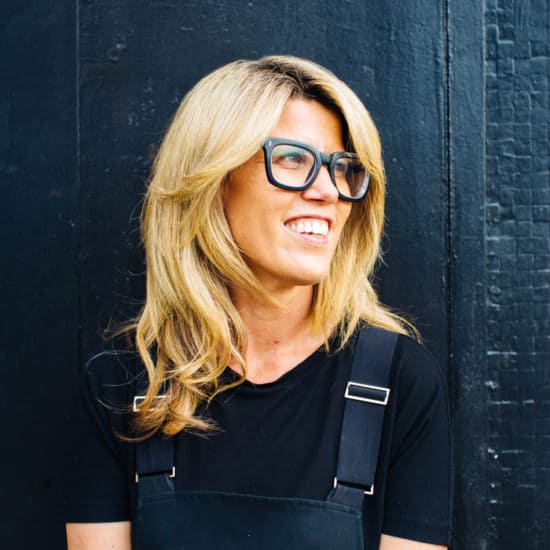
You did it! You left the 9-5 behind to run your own business – how did that happen?
I originally trained as an Economist – I came from a creative family, but rebelled the other way. I went into the civil service thinking I was going to change the world, then realised that’d take about 25 years and I didn’t have the patience for it! Then I jumped ship, joined the BRIT Awards then landed my dream job in MTV and moved to Australia.
Working for MTV in Australia, we always needed to find creatives. We were always hiring mates of mates – which was the way everyone worked but the problem with that from a creative perspective is that if you’re not getting an injection of fresh ideas and skills, your output starts to become very homogenous.
I was struggling with what there was available. Networking sites at the time didn’t have creative applications – like support for multimedia. This was back before Facebook or LinkedIn were what they are today – Instagram didn’t even exist. When I’m finding creatives for the business I want to see their portfolios so I can see what they’ve worked on.
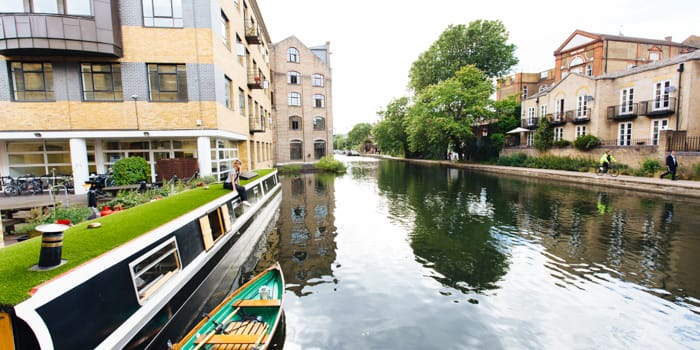
What led you to turn this problem into your own business?
I started the business out of sheer frustration with what there was available. We wanted to create something that’s really easy for people across the creative industries to connect online – but also to give them the commercial opportunities that are so crucial to freelancers.
My whole principle is : ‘Life is short, work somewhere awesome’. I was never someone who was like, ‘I’m going to be an entrepreneur’ – we started developing to solve a problem for ourselves and grew it into the biggest creative network in Australia. 67% of the creative industries were actively using the site.
We had no idea what we were doing – it’s not like now when there’s so much information online, so we had no idea what we were doing so it was all trial and error. But it worked!
How did you end up back in the UK?
We hit that classic start-up hurdle where my business partner and I wanted to go in different directions. I was always focused on international expansion. So I sold the business but acquired the global technology rights – then started all the way from scratch again.
Everything I’d made in the business in Australia I put back into relaunching it back in the UK. I went right from start-up to scale-up then right back to start-up again – so I had the platform, but I didn’t have any community or clients.
How did it feel to start again?
It’s an amazing gift – being given the second chance in the same business. We made so many mistakes the first time round – and to be able to start again and learn from that was great. It was the best thing that ever, ever happened. Now we’re back in scale-up mode.
Before I left, I had a big 360 review with my whole team and it was so good to take the learnings from our whole team – like, for example, I knew I had to bring in a COO. A lot of my team from Australia relocated to help us scale too.
How will making it easier to connect improve our creative industry’s output?
I got my initial job at the BRIT Awards through my dad – but I think that’s rubbish, because if I’d been born into a different background, I wouldn’t have got that initial break, and I wouldn’t be where I am now. It breaks my heart to think how much talent we’re squandering by not giving people a way in.
That, for me, is a bit of a travesty. There’s a super-bright bunch of creative people coming through. If they don’t know people in the creative industries, they don’t have a way in. So if we don’t give them that way in, the quality of our creative output is going to sink.
Diversity is very close to our hearts. Diversity is good for business – that’s proven now, so the problem now becomes how you connect with diverse talent. If you’re still going through the old-school way of using your existing network, that’s just going to perpetuate the problem.
How do you handle your work-life balance?
I get my energy from work – from meeting people and building connections. This whole cookie-cutter approach that everyone has to do yoga all the time, or not drink too much is rubbish – it’s about having the introspection to say ‘I’m the sort of person that gets energy from doing yoga, or walking’, or ‘I’m the sort of person that wants to go out on a Friday night’.
Everyone’s different – introverts might benefit more from not being around people, extroverts from being around people. The most important thing I learned is that you can’t really separate work and life – it’s all about knowing where you draw your energy from. Work actually brings me energy but at the same time, I now know there’s other things around me too that help make me feel sane. Being here on the water’s a big part of that – it’s very meditative. You can’t work all the time.
Photography by: Adrienne Pitts
If your 9-5 looks more like a 5-9, it might be time to take a look at how you can make more time for yourself. Try these 4 habits for a little more freedom and a happier working week.
Give your personal appointments the same respect as your work ones
Do you find you’re missing that gym class because you can’t tear yourself away from the keyboard? Or are you always coming home to a half-finished home improvement project that you can’t ever seem to get around to? It’s time to treat your personal schedule with the same respect you’d give your professional one.This is especially important for protecting those activities that bring you the most happiness – be it taking the time to catch up with a friend over dinner, joining that spinning class or even relaxing with a good book.
Try:
Plan your free time, every day, with the same rigour you would your working day – and stick to it. Put appointments in your calendar or diary – whether that appointment says ‘yoga class’, ‘dinner’ or just ‘Me. Netflix. Sofa’.
Bring your passions into your work
Blending who you are outside the office with who you are when you’re at your desk might be a little easier than you think. For some, it might be a power-ballad playlist to power you through your admin tasks, a little aromatherapy boost to your workspace, your favourite food for lunch or even the company of your dog while you work.
Whoever we are, there’s always something that brings us an extra bit of happiness, comfort and relaxation. Bringing some of those things into work can be easier than you think.
Try:
Take 15 minutes to make a list of some of the simple things that make you happiest. Warm jumpers, great sandwiches, fresh air, the music of Toto… Then, see how you can bring those things to work.
Stop being afraid of stopping
There’s always the temptation to keep going and tick one more thing off the list – often when we feel as though something awful will happen if we don’t. In truth, this is rarely the case – so when you’ve hit your target number of working hours for the day, just… stop. It really can be that simple.
For some people, setting the end of the working day as a hard stop can be really motivating too – if you’re someone who responds well to a deadline, you might find you’re getting more done in less time. Upping your productivity, and getting your evenings back? Yes please!
Try:
Give a time-tracking app a whirl. There are tons of free ones you could try. Give yourself 2 weeks of really honest tracking to see how much time you spend working, how much on leisure activities and how much resting. Make sure you count all those out-of-hours emails – when you have a truly honest reflection of how your time breaks down, you can see if you need to change the ratio.
Break with 9-5 convention
People genuinely do work to different rhythms, so don’t feel your hours need to be 9-5 just because everyone else’s are. This is true even in big businesses – a study by the CIPD showed 83% of businesses reported increased productivity after introducing flexible working.
And this approach benefits everyone. While for some, the most common hours really will work best for them, by giving that extra flexibility, you can take a huge amount of pressure off. No-one needs the extra stress of worrying about running ‘late’. And if that sounds familiar, maybe it’s time to shake up the way you think about the working day.
Try:
Experimenting with your day’s structure for the next 2 weeks – find a pattern that works for you. For a lot of people, this can vary by season too, so give yourself time to check this again every few months.
Looking for a few new ways to feel happy at work? We put together a book of 32 tips for a happier workplace with our friends at WeWork – get your free copy.
We can’t get enough of your amazing designs – from illustration to photography, the MOO community is creative, inventive and more than a little bit brilliant.
To bring you some inspiration, here are 3 graphic designers we want to introduce – with the stories behind their businesses and stunning designs.
The Roark Co
When we saw Adam and Meri-Lynn’s cards, we totally swooned – and not just because they feature the couple’s cat (who, by the way, is named Sirius Black). Their stunning use of Gold Foil is totally attention-grabbing – which is, of course, the effect they were going for. Adam tells us: ‘People really enjoy picking from the whole deck. It feels like we’re about to do a magic trick.”
This husband-and-wife design duo, working under the name The Roark Co, specialise in graphic design and crafts respectively, with some photography thrown in for good measure. As they put it: “Storytelling is what we obsess over. Our goal is to interpret moments as they happen; to actively tell a story, not pose one.”
“We love our cards because we feel that they are a tangible representation of our brand. They’re elegant and classy but still playful and slightly rebellious. In our line of work, print is still very much alive and if your business cards don’t make a statement it can be that much more difficult to stand out from a hundred other small branding companies. Clients want to see how we can take a brand from concept to application. Business cards are a small but powerful way of showcasing that.”
Puntuale Creative
Hailing from Turin, Italy, Silvia Virgillo – working under the name Puntuale Creative – makes gorgeously intricate illustrative designs, remarkably showcased in her Patternimals series. At a distance, these designs and colours grab the eye and on closer inspection, a repeating pattern of animals is revealed. Silvia works as a freelance graphic designer in editorial and branding design, after building up her experience in agencies.
Silvia made these cards to share with her clients, choosing our Luxe Postcards to give a feeling of permanence. She says: “I give my Postcards to potential clients. They’ve usually already seen a couple of my projects, so the primary goal is to show something surprising – it’s how I like to work. The Luxe paper is solid and substantial, so the cards aren’t perceived as something you’d take and then put aside.”
Juliet Meeks
Juliet Meeks is a graphic designer and artist based in New Orleans, Louisiana. Her delicate watercolours, strong typography and natural patterns work beautifully across the prints, pouches and homewares she sells in her online store.
Juliet uses MiniCards as hang tags on her products. She has them made with Rounded Corners because, as she puts it, ‘that makes them feel extra fancy,’ and loves being able to print her portfolio across the backs of the same pack of business cards. She says: ‘I think we need printed products more than ever in the age of social media. People feel more connected to your brand or business when they can take a piece of it with them, even if it’s just a business card. I also love the interactive element of letting someone pick our their favorite patterned card; it’s always fun to see who picks what!’
It’s the new year—you look inward, reflect on your strengths and weaknesses, and decide how you can improve. But have you thought about your business in the same way? After all, bigger, better goals aren’t just for your personal life. They’re helpful for your company too.
These four easy resolutions will help get your brand more organized, more productive, and sleeker than ever—just like you in 2017.
1) Say thanks with New Year’s cards
Holiday cards are a common way to thank clients for their business during the holiday season. But if you want to really stand out, a great-looking thank-you note will kick the year off right – with valued customers and within your team.
After all, January is also the perfect time to let employees know that you’ve appreciated their efforts over the past year. Not only will this act of gratitude make your staff feel warm and fuzzy inside—which is much needed in this post-holiday month—but it will also motivate them to do their best in the year ahead.

2) Set yearly, measurable goals
When it comes to getting better at what you do, half the battle is knowing what you’re trying to achieve. That’s why it’s important to set tangible goals for your company in the year ahead. What are your sales targets for each quarter? How much growth do you want to see in your marketing reach? Could your brand values be encapsulated even more succinctly by an inspiring new manifesto?
To keep all of your goals at the forefront, write them down on company letterhead and post them around the office. Out of sight means out of mind— and you don’t want that to happen. To increase your odds of sticking to your resolutions, choose an office accountability buddy. Set a time with them once per week, and see how the other is making progress throughout the year.
Another creative way to remind yourself of your objectives is to send a letter—to yourself. The moment you know what you want to accomplish, write it down. Then, postmark the card for the halfway point between that day, and when you want to achieve your goal. This is the perfect way to check in and reflect upon how you’re doing. Thanks, postal service!

3) Reorganize your organization
You might have resolved to keep your office more organized this year. However, as helpful as a tidy desk can be for focus and productivity, it’s even more important to look at your business itself and ask, how efficiently are you conducting your company?
One great goal for 2017 is to manage your – and your employees’ – time more effectively. The Pomodoro time management technique involves working in 25-minute bursts of activity, separated by short breaks. That way, you can effectively check off more tasks without burning out.
Other ways to supercharge your workday include making daily goals, prioritizing each day’s most crucial task, and scheduling email-reading periods. This is especially important for HR managers, who could easily respond to email for days at time.
Lastly, take some time to clean your phone. Believe it or not, having too many organizational apps can be distracting. For example, if you’re using Google Keep, Evernote, and Notes to keep track of your thoughts, you’re doing yourself a disservice. Instead, stick with one method of note-taking. Alternatively, go old school and try a pen and paper, instead!

4) Stock up on your card stock
If you’re still reeling from the back-to-work backlog, it can be easy to forget to order new business cards. After all, some people have probably been promoted for 2017—and others have been brought on board. Or maybe the sales and marketing teams have ambitious new goals to hit. Get everyone ready to network and score new leads with a tall stack of handsomely designed business cards. To make it easy, a MOO Business Services account can help your employees re-up their cards in a matter of clicks.
From the MOO team to you—happy New Year! Now, get out there and go crush those goals.
We’re delighted that this year, we’re sponsoring the small business category in Frankie Magazine’s Good Stuff Awards. The judge for this category, Tess McCabe, is a Melbourne-based designer and brand expert. She shared her thoughts with us about the pitfalls and passions small business and startups have to contend with.
Tell us about you! How did you get going as a self-employed designer?
Throughout university and as a graduate I’d always take on projects from family, friends, and friends-of-friends to build my portfolio of work and earn some cash on the side. Once I decided to take the leap to self-employment, many of those projects and connections formed the basis of my client list – even some of my clients today can be traced like a family tree to those early projects.
What persuaded you to take the leap to work for yourself?
The ability to have a flexible work day and integrate other projects into my work life.
How important is brand for a small business?
So important – if the brand and branding is well thought out and well executed it can underpin your business’ success and make all sorts of creative and business decisions a whole lot easier.
What are the best ways for a small business to build their brand?
Aesthetically, it’s wise to invest in the best quality photography and graphic design you can afford. In terms of brand-building and awareness, remember that customers are human beings and like to be treated as such. Word of mouth is powerful.
As a graphic designer, what are your best tips for people with no design experience who need to get consistency and quality in their visual material and photography?
A good graphic designer/branding professional will impart to their clients some form of education and insight into how they can maintain their professional brand image on their own… either through a style guide or other form of consultation and training. If you’re looking to DIY, maintain consistency of your visual communication by picking out a few key elements that always repeat – such as a key colour from your branding, a typeface, an image style or filter.
How can small businesses use social media to help them build their brand?
It’s so valuable for small brands as it gives you somewhere to interact meaningfully with your followers and customers, posting useful, interesting and inspiring content, maintaining visual consistency and speaking authentically as the voice behind the product or service.
How important is networking to small businesses? What does it mean to be part of a business-owner community?
Connecting with fellow small business owners in real life is almost the oxygen small business owners need sometimes, especially if you’re working by yourself day in day out. Running a business solo can be mind-bendingly challenging on some days and completely exhilarating on others, but it is rare to find people in one’s inner circle who truly understand that rollercoaster ride. Having a community around you who understand what that’s like, but can also offer advice or tips from their own similar experiences is utterly invaluable.
What do you think are the biggest challenges for small businesses today?
The amount of copying that exists with creative industries – it is usually larger businesses taking advantage of a small business or individual’s talent, hard work, and reputation, which is really sad. It might take more time (and more creative muscle) to bring something fresh to the marketplace but it’s worth it.
Find out more about how to enter the Good Stuff Awards.
Photo credit: Shannyn Higgins, Martina Gemmola and Tess McCabe.
What happens when a love of photography and fashion meets an unstoppable drive to change the world? We met Adrenus Craton to find out first hand.
When you’ve found a niche in which to run your small business, how can you balance the growth of your company with the steady support you need to keep it stable?
So what’s the perfect formula? Adrenus Craton is founder and director of London HOUSE Studio – a boutique photography studio with an in-house modelling agency, Novelmodels Elite. Adrenus’ goal is to help bring about positive change in the world by focusing on projects and people who are doing just that.
Adrenus, where to start? Tell us how you got to where you are now.
I graduated early and moved to NYC at 19. After some exploring, I moved to Eastern Europe in 2004 to travel a bit more of the world. I founded Novelmodels Elite whilst I was living in Sofia, Bulgaria. It began with our first published photo shoot, which highlighted a socially focused collaboration between jewellery designer, Jack Vartanian, and Demi Moore’s anti-trafficking foundation, now called Thorn.
What was the driving force to start London HOUSE Studio?
I wanted to open an agency dedicated to philanthropic and charitable causes to help raise awareness. Fashion is a global industry that fully engages people of all ages. It is a multi-national and multi-cultural media haven, and our youth is the driving force behind it all. If we can change what our youth stands for, eventually, we change what our world stands for.
What’s the next step?
The next step is to keep on growing! I can take this wonderful opportunity to announce the coming of New York HOUSE Studio. Novelmodels will continue scouting new faces from around the globe, and will be headquartered from NYC. I feel like now is the time to go back to my American roots and continue creating closer to home.
What’s been vital to your growth?
The quality of our branding has been hugely important, from the business cards and models’ cards to the photographs we print for project portfolios. As well, consistency with our message and clearly defining who the people are that we’re aiming our message to.
My biggest lesson has been to not let the industry change who you are, what you do or how you think. In business and in my personal life, if something feels right then that is what I believe, and that’s what I’ll act upon it.
We couldn’t help noticing that the studio was filled with PROPERCORN. How do you go about collaborating with other businesses?
If you believe in something whole heartedly, you’ll find like minded individuals when you reach out. PROPER CORN is a brand I’ve always believed in, their dedication to things “done properly” was similar to my own ethos.
What advice do you have for other small business owners?
Growing my business was scary – it’s a huge amount of pressure: mentally, physically and financially. As clichéd as it may sound, never give up. Get in a corner somewhere and meditate. If you believe, then it will find a way. Nothing happens to you, but everything happens for you.
Find the best paper for your message.
We caught up with Tess McCabe, Melbourne-based designer and brand expert, to talk about the pitfalls and passions small business and startups have to contend with.
Tell us about you! How did you get going as a self-employed designer?
Throughout university and as a graduate I’d always take on projects from family, friends, and friends-of-friends to build my portfolio of work and earn some cash on the side. Once I decided to take the leap to self-employment, many of those projects and connections formed the basis of my client list – even some of my clients today can be traced like a family tree to those early projects.
What persuaded you to take the leap to work for yourself?
The ability to have a flexible work day and integrate other projects into my work life.
How important is brand for a small business?
So important – if the brand and branding is well thought out and well executed it can underpin your business’ success and make all sorts of creative and business decisions a whole lot easier.
What are the best ways for a small business to build their brand?
Aesthetically, it’s wise to invest in the best quality photography and graphic design you can afford. In terms of brand-building and awareness, remember that customers are human beings and like to be treated as such. Word of mouth is powerful.
As a graphic designer, what are your best tips for people with no design experience who need to get consistency and quality in their visual material and photography?
A good graphic designer/branding professional will impart to their clients some form of education and insight into how they can maintain their professional brand image on their own… either through a style guide or other form of consultation and training. If you’re looking to DIY, maintain consistency of your visual communication by picking out a few key elements that always repeat – such as a key colour from your branding, a typeface, an image style or filter.
How can small businesses use social media to help them build their brand?
It’s so valuable for small brands as it gives you somewhere to interact meaningfully with your followers and customers, posting useful, interesting and inspiring content, maintaining visual consistency and speaking authentically as the voice behind the product or service.
How important is networking to small businesses? What does it mean to be part of a business-owner community?
Connecting with fellow small business owners in real life is almost the oxygen small business owners need sometimes, especially if you’re working by yourself day in day out. Running a business solo can be mind-bendingly challenging on some days and completely exhilarating on others, but it is rare to find people in one’s inner circle who truly understand that rollercoaster ride. Having a community around you who understand what that’s like, but can also offer advice or tips from their own similar experiences is utterly invaluable.
What do you think are the biggest challenges for small businesses today?
The amount of copying that exists with creative industries – it is usually larger businesses taking advantage of a small business or individual’s talent, hard work, and reputation, which is really sad. It might take more time (and more creative muscle) to bring something fresh to the marketplace but it’s worth it.
Find out more about Tess’ work here.
Photo credit: Shannyn Higgins and Tess McCabe.
